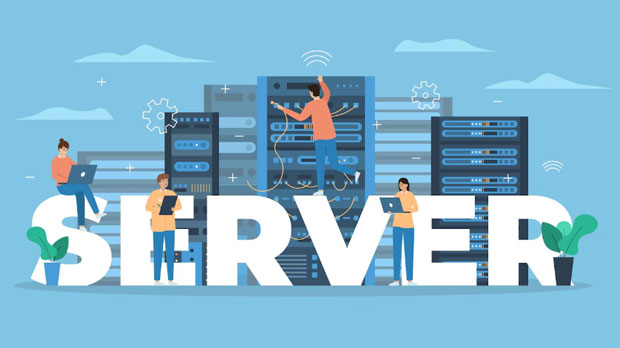In the world of internet privacy and security, proxies play a significant role in shielding users’ identities and data. However, when proxy servers are improperly configured, particularly with open ports, they may inadvertently expose sensitive information. In this article, we explore how open proxy ports could potentially lead to privacy breaches, the security risks involved, and the steps users can take to prevent unwanted exposure of their private data. Introduction to Proxy Servers and Open PortsProxy servers act as intermediaries between a user's device and the internet. They help mask users’ IP addresses, thereby offering an additional layer of security and anonymity. However, these benefits can be undermined if the proxy server is configured with open ports, which may expose users to potential security risks.An open port refers to a network port that is accessible to external connections. When a proxy server has open ports, it can allow unauthorized access, providing a potential gateway for hackers or malicious entities to gain access to the internal network. This breach could lead to the leakage of sensitive data or allow attackers to take control of the device or network.The Role of Ports in Network SecurityNetwork ports are fundamental to the way data is transmitted over the internet. Each port has a specific function, and when a device or service listens on a port, it means that it is ready to receive requests from other devices or networks. While some ports are essential for normal internet operation, others can be used maliciously if left unsecured.In the context of proxy servers, ports facilitate the communication between the user's device and the proxy service. If a proxy server is not properly secured or if unnecessary ports are left open, attackers may exploit these vulnerabilities to gain unauthorized access. How Open Proxy Ports Can Lead to Privacy Exposure1. Unauthorized Access to Sensitive Data One of the primary risks of open proxy ports is that they may expose sensitive information. Attackers could scan the open ports to detect vulnerabilities and exploit them. If the proxy server is not properly configured with strong encryption or authentication mechanisms, attackers might gain access to the data transmitted through the proxy. Furthermore, attackers could potentially intercept the user’s connection to the internet or the proxy server, allowing them to monitor browsing activities, capture login credentials, or even steal personal details such as credit card information or social security numbers.2. Malware and Ransomware Attacks Open proxy ports can provide an entry point for malware and ransomware attacks. Once an attacker gains access through an open port, they can infect the user's device or network with malicious software. This malware can perform various malicious actions, from stealing data to encrypting files and demanding a ransom for their release. By exploiting an open proxy port, cybercriminals can bypass traditional security measures, like firewalls and intrusion detection systems, making it harder for users to detect and respond to such threats.3. Denial-of-Service (DoS) Attacks Another risk associated with open proxy ports is the potential for denial-of-service attacks. Hackers can exploit open ports to overwhelm the proxy server with excessive traffic, causing the server to crash or become unresponsive. This type of attack not only disrupts normal internet access but also exposes the server to further vulnerabilities.4. Identity Theft and Impersonation When open proxy ports are misused, attackers can use them to disguise their own identity, making it difficult to trace their actions. This can lead to identity theft, where attackers impersonate users to commit fraud, hack into personal accounts, or access sensitive data. In some cases, attackers could also reroute traffic through their own servers, allowing them to capture or modify communication between users and other services. This “man-in-the-middle” attack could potentially expose private data, such as passwords, emails, or chat logs.How Open Proxy Ports Can Affect the Integrity of Online ActivitiesProxy servers are often used to bypass geographical restrictions, avoid censorship, or enhance privacy during internet browsing. However, the use of open proxy ports can undermine these very goals.1. Loss of Anonymity One of the primary reasons users opt for proxy servers is to maintain anonymity while online. However, if the proxy server has open ports, it becomes possible for third parties to track users’ activities, potentially undermining the entire purpose of using a proxy in the first place. This loss of anonymity can expose users to various risks, including profiling, tracking, and even harassment.2. Risk of Account Compromise Many users rely on proxy servers to access sensitive accounts, such as online banking, social media, and email accounts, securely. However, open proxy ports can put these accounts at risk. Once attackers gain access to the proxy server, they could exploit vulnerabilities to log into these accounts, potentially compromising personal information or even making unauthorized transactions.Preventing Privacy Exposure from Open Proxy Ports1. Proper Configuration and Firewalls The best way to prevent the risks associated with open proxy ports is to configure the proxy server securely. Administrators should ensure that only necessary ports are open and that they are protected by firewalls. Additionally, only trusted users should be allowed access to the proxy server, and strong authentication methods, such as multi-factor authentication, should be implemented.2. Port Scanning and Regular Security Audits Conducting regular security audits and using port scanning tools can help identify open ports on proxy servers and detect any vulnerabilities. Early detection of exposed ports allows administrators to take swift action to close them, reducing the risk of unauthorized access.3. Use of Encryption and Secure Protocols Encryption is essential for protecting the data being transmitted through a proxy server. By implementing secure protocols, such as HTTPS or SOCKS5, the data is encrypted, making it more difficult for attackers to intercept or manipulate it. This added layer of protection can help prevent data breaches and enhance privacy.4. Updating and Patching Proxy Servers Just like any other software, proxy servers must be regularly updated and patched to fix any known security vulnerabilities. Outdated software can have security holes that hackers can exploit, which is why timely updates are essential for maintaining a secure environment.ConclusionIn conclusion, while proxies are a useful tool for protecting privacy, open ports can expose users to serious security threats. Improperly configured proxy servers with open ports can lead to unauthorized access, identity theft, malware attacks, and other forms of privacy breaches. To minimize these risks, users must ensure that their proxy servers are configured securely, regularly audited for vulnerabilities, and equipped with strong encryption and authentication methods.By being aware of these potential security risks and taking the necessary precautions, users can ensure that they protect their privacy while enjoying the benefits of proxy servers. ---Is It Possible for Open Proxy Ports to Expose Your Privacy? A Comprehensive AnalysisIn the world of Internet privacy and security, proxy servers play an important role in protecting user identities and data.
Apr 18, 2025
![arrow]()




























































